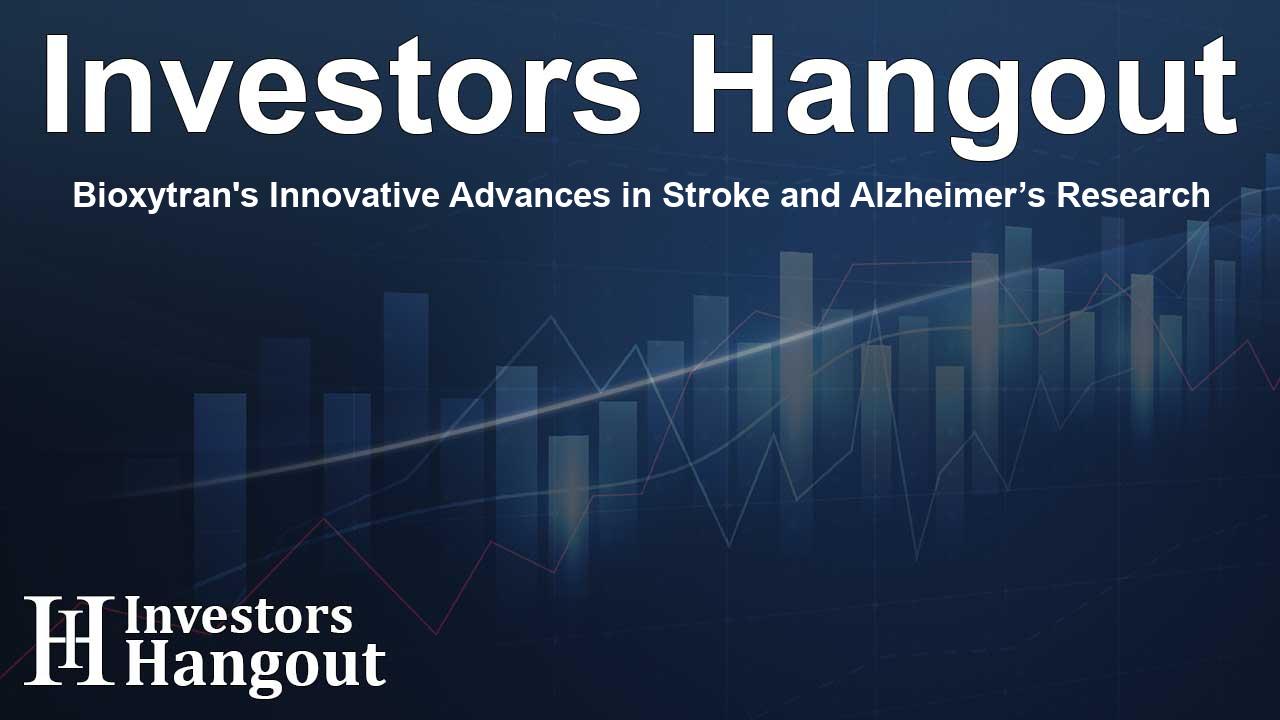Bioxytran's Innovative Advances in Stroke and Alzheimer’s Research

Bioxytran’s Innovative Approach to Stroke and Alzheimer’s Treatments
Bioxytran, Inc. (OTCQB: BIXT), a leading biotechnology company, is making remarkable strides in the treatment of ischemic stroke and Alzheimer’s disease. Their latest development involves a comprehensive research publication authored by the company’s Science Advisor, Professor Avraham Mayevsky. This work is pivotal for Bioxytran’s clinical program aimed at harnessing a universal oxygen carrier (UOC) to improve patient outcomes in these critical health issues.
Insights from Mongolian Gerbil Research
The groundbreaking book titled The Mongolian Gerbil Brain: Mitochondrial Function, Vasculature, and Pathophysiological States, published by Springer, emphasizes the significance of the Mongolian gerbil as a model for studying ischemic stroke. The unique characteristics of the gerbil's brain, such as its lack of vascular compensatory mechanisms, allow researchers to gain invaluable insights into stroke pathophysiology. This publication aligns directly with Bioxytran’s goal of using the MDX Viewer to analyze tissue oxygenation.
The Role of the MDX Viewer in Stroke Treatment
Bioxytran's UOC is designed to replace traditional hyperbaric oxygen therapy, offering better efficacy at the cellular level. This unique approach helps deliver therapeutic oxygen directly, contrasting with the reactive oxygen species commonly associated with hyperbaric treatments. The MDX Viewer technology is pivotal for providing real-time metabolic data, essential for both regulatory compliance and treatment efficacy.
Research Validation and Future Directions
The findings contained in Professor Mayevsky’s publication further bolster the scientific foundation for Bioxytran’s ongoing clinical research. This validation places the company at the forefront of brain health innovations and neuroprotective therapies. With over six decades of research compiled into this book, it serves as a monumental resource for understanding stroke and neurodegenerative diseases.
Expert Insights on the Gerbil Model
As stated by Professor Mayevsky, one notable challenge in clinical trials is accurately gauging the effectiveness of treatment drugs. The Mongolian gerbil brain model offers significant predictive capacity for ischemic stroke and Alzheimer’s disease. Coupled with the advanced capabilities of the MDX Viewer, this model helps uncover the underlying mechanisms of disease progression and facilitates better therapeutic strategies.
About Bioxytran, Inc.
Bioxytran, Inc. is dedicated to addressing urgent medical needs through its innovative carbohydrate-based therapeutics. The company's research encompasses various areas, including virology, cancer, and oxygen transport. Among its advancements is the program for BXT-25, a potential treatment to reduce time-to-needle in emergency situations, enhancing the chances of better patient outcomes.
The Impact of Innovative Research on Stroke and Alzheimer’s Treatment
By utilizing the knowledge gained from the Mongolian gerbil research and the MDX Viewer technology, Bioxytran is uniquely positioned to make monumental contributions to the fields of stroke management and neurodegenerative disease treatment. The dedication to innovation and thorough research will likely lead to significant improvements in patient care and recovery times.
Frequently Asked Questions
What is the main focus of Bioxytran, Inc.?
Bioxytran, Inc. is focused on developing advanced therapeutics to treat ischemic stroke and Alzheimer’s disease through innovative approaches, including the use of a universal oxygen carrier.
Who is Professor Avraham Mayevsky?
Professor Avraham Mayevsky is a Science Advisor for Bioxytran and an expert in the field whose research on the Mongolian gerbil brain has become critical for understanding stroke and neurodegenerative diseases.
What technology does Bioxytran utilize for monitoring oxygenation?
Bioxytran uses the MDX Viewer, which is FDA-approved to measure tissue oxygenation, allowing for real-time insights into metabolic responses during treatments.
How does the UOC differ from traditional therapies?
The UOC provides a therapeutic type of oxygen at the cellular level, which is more effective compared to the reactive oxygen species produced during hyperbaric oxygen therapy.
What are the potential benefits of BXT-25?
BXT-25 has the potential to significantly decrease the time it takes for patients to receive critical interventions during stroke emergencies, thereby improving outcomes.
About The Author
Contact Dominic Sanders privately here. Or send an email with ATTN: Dominic Sanders as the subject to contact@investorshangout.com.
About Investors Hangout
Investors Hangout is a leading online stock forum for financial discussion and learning, offering a wide range of free tools and resources. It draws in traders of all levels, who exchange market knowledge, investigate trading tactics, and keep an eye on industry developments in real time. Featuring financial articles, stock message boards, quotes, charts, company profiles, and live news updates. Through cooperative learning and a wealth of informational resources, it helps users from novices creating their first portfolios to experts honing their techniques. Join Investors Hangout today: https://investorshangout.com/
The content of this article is based on factual, publicly available information and does not represent legal, financial, or investment advice. Investors Hangout does not offer financial advice, and the author is not a licensed financial advisor. Consult a qualified advisor before making any financial or investment decisions based on this article. This article should not be considered advice to purchase, sell, or hold any securities or other investments. If any of the material provided here is inaccurate, please contact us for corrections.
